Listen to our latest radio program! Go to https://drive.google.com/file/d/1P–KHGSbG_3u6DZU_X5cf1yqUH2kT4t_/view?ts=64497526
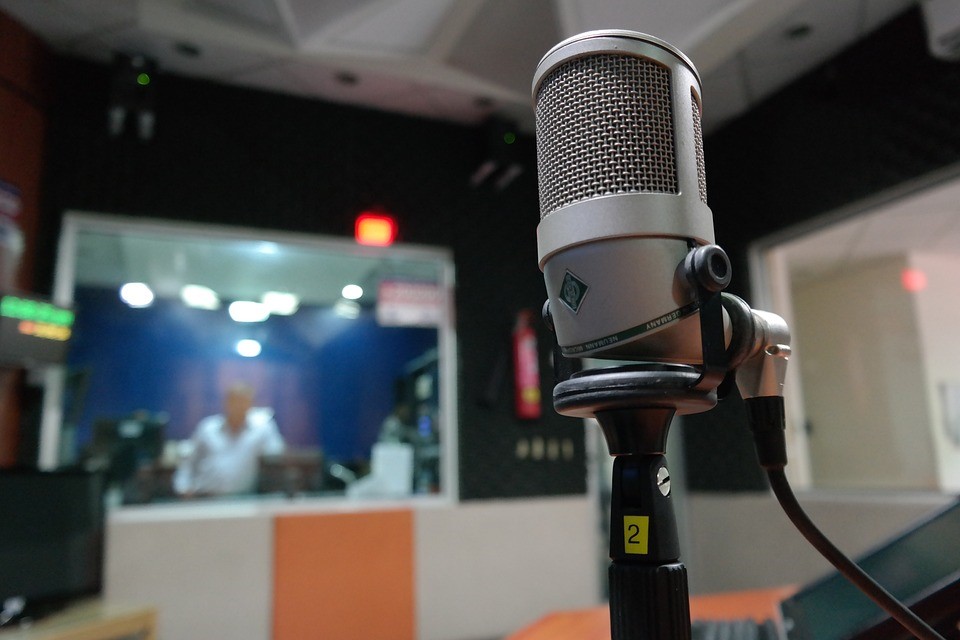

Listen to our latest radio program! Go to https://drive.google.com/file/d/1P–KHGSbG_3u6DZU_X5cf1yqUH2kT4t_/view?ts=64497526

To watch our latest television program, go to https://rumble.com/v2klram-american-political-zone-april-25-2023.html

Few deny China is a serious threat to the free world and the international rules-based economic system. It possesses advanced military technologies and is growing exponentially in military power, but is it ready to challenge the United States for world leadership? Or is the world witnessing a blustering China that has reached its apex? Despite CCP propaganda and misinformation, the reality is that China and its communist leaders are not destined to lead a new world order, according to most political analysts in Washington, although the country remains a serious threat.
The leadership in Beijing touts big advances in its economy; and it has advanced significantly from a developing nation into an industrialized state. There are signs, however, that it may not continue its ascent in future decades. Foreign policy analysts note that a developing state’s economy is typically expected to expand more than a mature economy, like that of the United States. That expectation does not make the communist giant less dangerous today and, perhaps, even increases the likelihood of it committing an egregious aggressive act against neighboring Taiwan or other Pacific Rim countries.
For the first time this year in March, the Chinese yuan became the most widely used currency for cross-border transactions in China, according to official data from Beijing. While it sounds impressive and does reflect Chinese efforts to internationalize use of the yuan, a closer examination reveals what this means in terms of the global economy. China’s State Administration for Foreign Exchange, according to a Reuters calculation, indicates that cross-border payments and receipts in yuan rose to a record $549.9 billion, up approximately 21% from $434.5 billion in February.
Its use in global trade finance, although growing, remains very low. Reuters reports this week that data from the Society for Worldwide Interbank Financial Telecommunications (SWIFT), also referred to as a CIC Code, “showed that the yuan’s share of global currency transactions for trade finance rose to 4.5% in March, while the dollar accounted for 83.71%.” That does not even place China in the top eight that include the US Dollar in first place, followed by European Euro, Japanese Yen, British Pound, Swiss Franc, Canadian Dollar, Australian/New Zealand Dollar, and the South African Rand. According to the Global Times, the yuan now accounts for only 7% of all foreign exchange trades. It is impressive for a nation-state that 35 years ago could not feed its own population, but it is not a strong indicator that China is the up-and-coming global economic power it claims.
With 18% of the world’s population, the Chinese economy is expected to contribute a third of global growth in 2023. Again, it may sound impressive, but the United States with less than 5% of the world’s population generates more that 20% of the world’s total income, according to the US Trade Representative’s Office. America remains the world’s largest national economy, leading global trader, and that is not going to change in the near future. A February International Monetary fund report by Diego Cerdeiro and Sonali Jain-Chandra says that “With a shrinking labor force and diminishing returns to capital investment, [China’s] growth in coming years will depend on boosting declining productivity growth. Without reforms, we currently estimate growth to fall below 4 percent over the next five years.” This number falls well below the required minimum in China’s newest 10 Year Economic Plan. This is not the story China wants told to the world.
The IMF report adds that “Reforms such as gradually lifting the retirement age to increase labor supply, strengthening unemployment and health insurance benefits, and reforming state-owned enterprises to close their productivity gap with private firms would significantly help to boost growth in coming years. Undertaking such reforms would enable China’s income level to rise by around 2.5 percent in five years.” The population faces many unsurmountable economic obstacles. The greatest challenge may be one that demographers say can’t be changed. China’s population is declining.
If the government were able to force every woman of child-bearing years to have as many children as possible of her lifetime, China cannot physically replace its population. Its decades long, draconian, one-child policy has doomed China’s future growth for generations. At the same time that its overall population size is decreasing, the percentage of those over 60 will increase from 17.8% in 2020 to 26.19% in 2030 and 38.81% by 2050. By 2100 over 47% of the Chinese population will be of retirement age.
In comparison, by 2050, Statista demographic data estimates that only 22% of the United States will be senior citizens. The numbers look just as bleak when comparing annual salaries. The 2021 average US salary, according to Statista, is $71,456. In China there are great differences among the provincial areas from a low in Henan of $9,835 to $21,839 in Shanghai, a city that ranks the 12th most expensive to live in globally and Beijing at $24, 386 that ranks the 10th most expensive.
China is dangerous today for a number of reasons. Countries that are in decline, or near the precipice, will use all means possible to avoid the downfall. Last month China officially registered its first population decline data. The leadership in Beijing, some military analysts suggest, recognizes the need to act soon before it loses its ability to do so. There are no signs in Beijing that Xi Jinping or others in the senior CCP leadership are looking toward reforms as the means of escape. Xi remains belligerent in his speech. His actions are defiant and he shows no intention of abiding by the global norms of behavior used in the international rules-based system that has brought great prosperity to so much of the world.
Daria Novak served in the U.S. State Dept.
Illustration: China defence Ministry

US foreign policymakers refer to specific locations around the world with great potential for conflict as “flashpoints” where regional policy, including economic development, human rights practices, political stability, and the security environment intersect. These tend to be areas where influence, power, and resources converge over the millennium and result in war. Periodically, the State Department updates those spots to reflect current threat conditions.
On Monday, April 23, 2023, the State Department in Washington released a statement saying: “The United States is deeply concerned that Azerbaijan’s establishment of a checkpoint on the Lachin corridor undermines efforts to establish confidence in the peace process. We reiterate that there should be free and open movement of people and commerce on the Lachin corridor and call on the parties to resume peace talks and refrain from provocations and hostile actions along the border.” While such a statement may seem innocuous, it is an indication that Washington sees new trouble brewing for the 72 million people living in Central Asia.
This region links East and West commercially and provides China an avenue for accessing European markets without transversing Russia. The Lachin Corridor itself is a “lifeline” that consists of a single mountainous road linking Armenia with the Nagorni-Karabakh territory. The corridor is dejure, or legally recognized, as belonging to Armenia, but currently is under the control of Russian military forces. On Sunday, Azerbaijani officials set up a checkpoint there, claiming it was meant to prevent the “illegal transportation of manpower, weapons, [and] mines.” This region and others like it in Central Asia may not make front page news in the West, but each one serves as an important lynchpin holding the fragile peace together. It grows more complicated when considering that Russian and Chinese spheres of influence are tangent in Central Asia, with Beijing ascending as the dominant outside power in recent years.
The Fergana Valley is another Central Asian location that has seen conflict in past years. It is a large triangular valley that formerly was divided into three republics of the former Soviet Union. It lies mainly in eastern Uzbekistan but crosses into southern Kyrgyzstan and northern Tajikistan. Its ethnically diverse history extends back more than 2,300 years to a time when Alexander the Great founded Alexandria Eschate in its southern end. Chinese explorers date its towns in the Valley as older than 2,100 years and call it the path between the Greek, Bactrian, Parthian, and Chinese civilizations. The Russian empire conquered the Fergana Valley at the end of the 19th century, and it joined the Soviet Union in the 1920’s. The history of the peoples of Central Asia, like the political demarcations of many Middle Eastern nation-states, does not match well with political, tribal, and ethnic affiliations.
Since the 2020 ceasefire agreement, tensions have escalated in Nagorno-Karabakh as Russia has accused Azerbaijan of numerous incidents violating the ceasefire. Baku last month claimed Russian peacekeepers distorted the facts of a serious March 5 incident between Azerbaijani soldiers and de facto police which left 5 dead. Tensions increased again on March 25 when Azerbaijani forces cut off alternative roads to prevent transport of “manpower [and] military equipment” into Nagorno-Karabakh, with a formal blockade put in effect on March 30. Each side is calling for the other to recognize the area as its own.
Rand Corporation notes that “The five former Soviet republics that constitute Central Asia—Kazakhstan, Kyrgyzstan, Tajikistan, Turkmenistan, and Uzbekistan… Together and separately… face and pose a range of challenges and opportunities as they define their relationships with neighbors such as China, Russia, and Afghanistan and partner countries in Europe, Asia, and the Americas.” Three out of the five Central Asia’s countries, including Kazakhstan, Tajikistan and Uzbekistan, have experienced large-scale unrest last year. In each case the governments in the region blamed interference from foreign groups looking to create instability or weaken the cohesion among the five former Soviet satellite states.
There is real concern for stability in the region as Central Asian governments tend to exacerbate the external challenges by blaming foreign sources as the ubiquitous root cause of their domestic problems. Central Asian governments need to address inadequate infrastructure, limited employment opportunities, high living costs, a lack of transparency and accountability, and human and political rights violations. The confluence of so many issues in one geopolitical area is a good reason for Washington and the world to be concerned about the fragile peace in Central Asia.
Daria Novak served in the U.S. State Dept.
Illustration: Pixabay
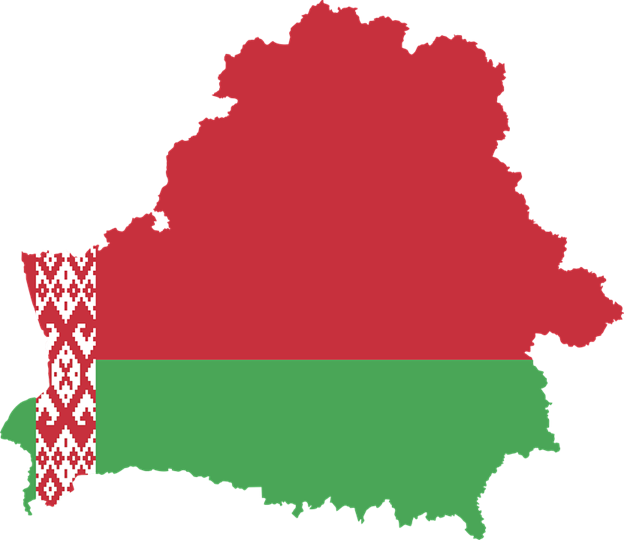
Russia needs friends but since the dissolution of the Soviet Union has settled on the misdirected goal of attempting to dominate its neighbors and former satellite states. What Putin is attempting to acquire today could more correctly be termed borderless “special relationships,” not true alliances. That attitude is tolerated, but not well received in foreign state capitals across Eastern Europe. One of the more interesting, related events was virtually overlooked in Western media this month. It is the lingering, but evolving, bilateral integration between Russia and Belarus under the auspices of the Union State.
On April 6, Russia’s Supreme State Council of the Union State met to discuss the political-military environment in Europe, among other topics, according to Yauheni Preiherman of the Jamestown Foundation. “The meeting’s agenda included a review of the progress on the Guidelines for Implementing the Provisions of the Treaty Establishing the Union State in 2021–2023, a document that envisages joint work under 28 sectoral Union programs” according to a Russian government press release. Kremlin spokesman Dmitry Peskov noted that, at the meeting, Russian President Vladimir Putin did not discuss the placement in Belarus, of Russian strategic nuclear weapons in talks with Belarusian President Alexander Lukashenko. Previously in March, however, there was an intensification of tensions between Russia and the West. Putin announced that he did intend to station Russia’s shorter-range, tactical nuclear weapons in Belarus. Russia’s propaganda machine has extensive expertise in misdirection and uses it to further its goals. Preiherman says Moscow is now claiming this move was forced upon it by the expansion of the NATO military alliance towards Russia’s borders.
Minsk and Moscow have a long and complicated history. By the early 1990’s, Moscow began discussing the reintegration of Belarus. By the April 2019 Minsk Dialogue, the two states had already signed a number of unique agreements. Preiherman says the 1999 Treaty on the Establishment of the Union State of Belarus and Russia was misinterpreted in the West as Belarus abrogating its sovereignty to Russia. He adds that, in reality, “the treaty itself did not facilitate the transfer of Belarus’s sovereignty either to Moscow or any supranational bodies. Instead, the 1999 agreement enshrined several checks and balances that provided for legal parity between the two countries and ensured that no Union State decision would pass unless accepted by Minsk.”
Many Belarusian leaders, however, grew concerned that the treaty and future subsequent agreements could evolve into a steppingstone approach by Moscow to draw Minsk closer and eventually incorporate it into the Russian state. Kommersant reports that these worries were particularly acute after Russian President Vladimir Putin famously demanded in 2002 that “flies be separated from cutlets” and invited Belarus to join the Russian Federation. Minsk declined the offer. Then-Russian Prime Minister Dmitry Medvedev, in December 2018, put out what became known as the “integration ultimatum.”
It stated that the special relationship between Belarus and Russia could only be preserved if both countries returned to the full implementation of the Union State treaty. In response, Preiherman says, Minsk agreed to launch structured talks but adhered to an uncompromising position on all issues that could potentially undermine its sovereignty. “Multiple asymmetries in Belarusian-Russian relations notwithstanding, Minsk could still allow for such a tough stance in those days thanks to what appeared to be expanding room for geostrategic maneuver and, most importantly, growing opportunities for diversifying foreign trade and investment, primarily through enhanced cooperation with the West,” he adds. Since the beginning of Russia’s war in Ukraine, Belarus’ pathway to avoiding sanctions narrowed. As a result, over the last 18 months the two countries announced they have initiated 28 sectoral programs to advance bilateral integration. A formal decree was signed in November 2021 to authorize the implementation of the integration programs. By January of this year approximately 70% of the 28 planned programs were in progress.
As of this month that number has increased to 80%, according to the publication RIA Novasti. Belarusian Deputy Prime Minister Pyotr Parkhomchyk says this “will allow for achieving technological sovereignty within the Union State’s framework.” One result this spring is that economic cooperation between the two has dramatically increased. The volume of Belarusian-Russian trade increased by 35 percent in 2021 and by another 12 percent in 2022, amounting to $45 billion in goods and about $5 billion in services, according to Preiherman. As the two states become more isolated they are likely to become more dependent on each other. The voices of leaders in Minsk urging caution about becoming too engaged with Moscow, are drowning in the sound of goods exchanged and money transferred into its Belarus’ coffers.
Daria Novak served in the U.S. State Dept.
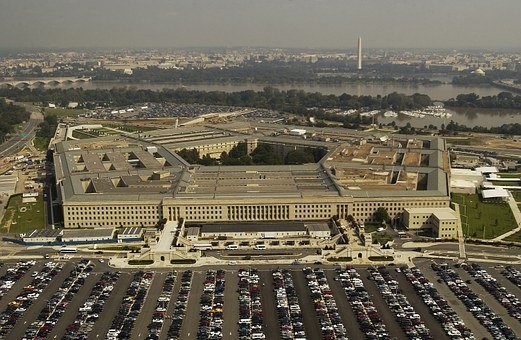
Don’t turn around, look, look,
the Kommissar is out and about!
He’ll keep his eye on you
and you know why.
Since its inception, the Biden Administration has issued a series of Executive Orders, all intended to foster “Equity, Diversity and Inclusion” across the federal government. On the date of his Inauguration, Biden issued an Executive Order on “Advancing Racial Equity and Support for Underserved Communities Through the Federal Government,” which declared that “the policy of my Administration (is to) pursue a comprehensive approach to advancing equity for all…(a)ffirmatively advancing equity…is the responsibility of the whole of our Government.”
Then,on June 25, 2021, Biden issued a further Executive Order, this time on “Diversity, Equity, Inclusion, and Accessibility in the Federal Workforce.“This order requires “a coordinated Government-wide initiative to promote diversity and inclusion in the Federal workforce, expand its scope to specifically include equity and accessibility, and…develop and issue a Government-wide Diversity, Equity, Inclusion, and Accessibility Strategic Plan.”
On February 16, 2023, Biden added yet another Executive Order – this time, on “Further Advancing Racial Equity and Support for Underserved Communities Through The Federal Government.” According to this order, it “continues to be the policy of my Administration to advance an ambitious, whole-of-government approach to racial equity…and to continuously embed equity into all aspects of Federal decision-making.”
This order establishes “Agency Equity Teams” across a number of federal agencies, including State, Treasury, Defense, and Justice, “to coordinate the implementation of equity initiatives and ensure that their respective agencies are delivering equitable outcomes for the American people.”
“Each Agency Equity Team shall be led by a designated senior official…charged with implementing my Administration’s equity initiatives…(t)he senior designee at each agency shall be responsible for delivering equitable outcomes…(e)ach Agency Equity Team shall support continued equity training and equity leadership development for staff across all levels of the agency’s workforce.”
The Department of Defense wasted no time in falling into step with the Biden Administration’s efforts to implement “equity initiatives.” According to its website, the “Office for Diversity, Equity, and Inclusion (ODEI) is an organization aligned under the Office of the Under Secretary of Defense (Personnel and Readiness) that develops and executes diversity management and equal opportunity policies and programs affecting active duty and reserve component military personnel, and DOD civilian employees.”
The website details a number of personnel responsible for the implementation of these principles. There is Cyrus Salazar, the Director of the ODEI, who “serves as the Department’s Chief Diversity Officer and the principal staff advisor to the Executive Director, Force Resiliency, on matters pertaining to oversight responsibility for the direction and enforcement of all…policies affecting civilian and military personnel worldwide.” Then there is Norvel “Rock” Dillard, who “serves as the Director, Diversity and Inclusion (D&I) Management at the Office for Diversity, Equity, and Inclusion (ODEI).” He is tasked with providing “advice and guidance to DoD leadership at the highest levels…concerning all diversity and inclusion management and compliance issues.”
There is also Colonel Mary L. Martin, the Commandant of the Defense Equal Opportunity Management Institute. Originally known as the Defense Race Relations Institute, the DEOMI hosts “education and training programs in human relations, equal opportunity, equal employment opportunity, and diversity… to provide Service members in command or leadership positions with some level of equal opportunity and human relations awareness training…(t)hat mandate has been carried to the Services by over 50,000 DEOMI graduates.”
One course available is the Equal Opportunity Advisors Course (EOAC). According to the course offering, “(w)hen students graduate from this course, they will be prepared to serve as advisors to Commanders on Military Equal Opportunity (MEO) matters.” What would be the skills they learn in this class? “Possess conscious knowledge of one’s character, feelings, motives, and desires (self awareness)…Recall the DoD policy on extremism (dissident and protest activities); understand the impacts of extremism; and recognize how extremist ideology and groups are cultivated…(and) Prepare correspondence and recommend changes in policies and practices to eliminate barriers to diversity and EO matters,” among other skills.
There is also a “Special Emphasis Program Managers Course (SEPMC).” This class allows “graduates to serve as effective…Special Emphasis Program Managers (Federal Women’s, Black Employment, Hispanic Employment, Native Hawaiian or Other Pacific Islander Employment, Asian Employment, American Indian/Alaska Native Employment, and Program for People with Disabilities)…(t)raining introduces the causes and effects of discrimination…and managing diversity issues.” In this class, the student learns to “(c)omprehend how cultural awareness can impact mission effectiveness…(c)omprehend how socialization can impact human relations…(and) Know the basics of power, prejudice, and discrimination and their relationship,” among a variety of other skills.
These are only two of the courses offered by the Defense Equal Opportunity Management Institute, courses which have been completed by at least 50,000 service members spread across all branches of the military. These “Equal Opportunity Advisors” and “Special Emphasis Program Managers” serve as advisors to various active duty military commanders, and manage various programs designed to increase “Equity, Diversion and Inclusion” in the Marines, Navy, Army, Air and Space Forces.
Does this vast bureaucracy intertwined into our military remind you of anything?
“Political control of the military forces challenges all states, democratic, authoritarian, or totalitarian, to balance the need for an effective military against allowing the military to grow into a threat to the internal political order…(while) the military establishment of the USSR resembled in its organization and functions a typical army not unlike the militaries of other nations, the Soviet armed forces possessed a dual military-political command and control system unique to the Communist totalitarian state…in accord with its Marxist-Leninist principles and its Communist Party control of society. The Party’s preeminence in all public and private affairs had to be maintained in the military as it did in the Soviet society at large…the Party (also) needed to use the military as an agent of social control and change internally, as well as the primary means of external power projection in the competition of states.”
To this end, “what was the Soviet solution for ensuring total dominance of the military by the Party? The creation of a dual chain of military and political command throughout the armed forces, paralleling the military hierarchy from battalion to the Ministry of Defense, was established by appointing a political ‘deputy’ commander for each military commander. These ‘commissars,’ as they were first called, exercised specific official and unofficial control functions over their military command counterparts. The political officers also served to further Party interests with the masses of drafted soldiery of the USSR by indoctrination in Marxist-Leninism…(w)hile the zampolit wore the same uniform as other Soviet officers, he was not on the same career path as a regular officer. Devoted Communists selected for special schools and training entered the army..(t)he statute on commissars opened with this passage: ‘The military commissar is the immediate political representative of Soviet authority in the Armed Forces. The post of military commissar is of paramount importance, and is open only to revolutionaries who are above reproach and can be counted on to remain the incarnation of revolutionary duty even in the most trying circumstances.’
“Service as a political officer was on the resume of most of the high Soviet leadership. Stalin, Khrushchev, Brezhnev, and others served as political officers at various points in their careers….Political supervision is the primary reason for the existence of and the first duty of the zampolit. He attested once a year to the political maturity and reliability of all the officers in the unit…Note that he attested to the political suitability of his commander for future promotion and advancement! He ensured the orders of the commander are in line with Party policy and doctrine, and he put the weight of Party authority behind the approved actions of the commander. This situation gave the zampolit tremendous informal power in the parallel Party control system of the armed forces…Indoctrination of the unit’s personnel was the second priority of the zampolit. The enlisted personnel endured lengthy and stupefying lectures on the Party, its goals, accomplishments, and plans for the future. Officers and sergeants were expected to study and learn the tenets of Marxist-Leninism in study groups overseen by the political officer. The Party thus used the military as an engine of social change and control in that the draftee enlisted men of the Soviet army were captive to relentless political education while the long service officers and sergeants were thoroughly indoctrinated into the Party concepts.”
Could the parallel be more clear? Much like the Commissars of the Soviet military, the “Equal Opportunity Advisors” are responsible for the indoctrination of both their Commanders and the rank and file to the principles of “Equity, Inclusion and Diversity.” These “Advisors,” and “Managers,” spread throughout every branch of our Armed Services, have been trained to “comprehend how cultural awareness can impact mission effectiveness,” and “recommend changes in policies and practices to eliminate barriers to diversity.”
Imagine the Commander who resists the advice of their “Equal Opportunity Advisor.” Would that Commander be eligible for “future promotion and advancement?” Consider also the efforts made to educate those entering into the Armed Forces in the doctrine of Equity. Is this not reminiscent of the “relentless political education” described above?
As is also described above, Biden’s February Executive Order seeks to “continuously embed equity into all aspects of Federal decision-making” by the establishment of “Agency Equity Teams” to “coordinate the implementation of equity initiatives and ensure that their respective agencies are delivering equitable outcomes for the American people.” These teams have been placed in a number of federal agencies, including State, Treasury, Justice – and Defense. They are “led by a designated senior official…charged with implementing (the Biden) Administration’s equity initiatives…(t)he senior designee at each agency shall be responsible for delivering equitable outcomes…(e)ach Agency Equity Team shall support continued equity training and equity leadership development for staff across all levels of the agency’s workforce.”
Clearly, Joe Biden has accomplished through Executive Order what no American believed could be possible – he has established political officers in the US military, each trained to insure orthodox adherence to the goal of “Equity.”
Judge John Wilson (ret.) served on the bench in NYC.
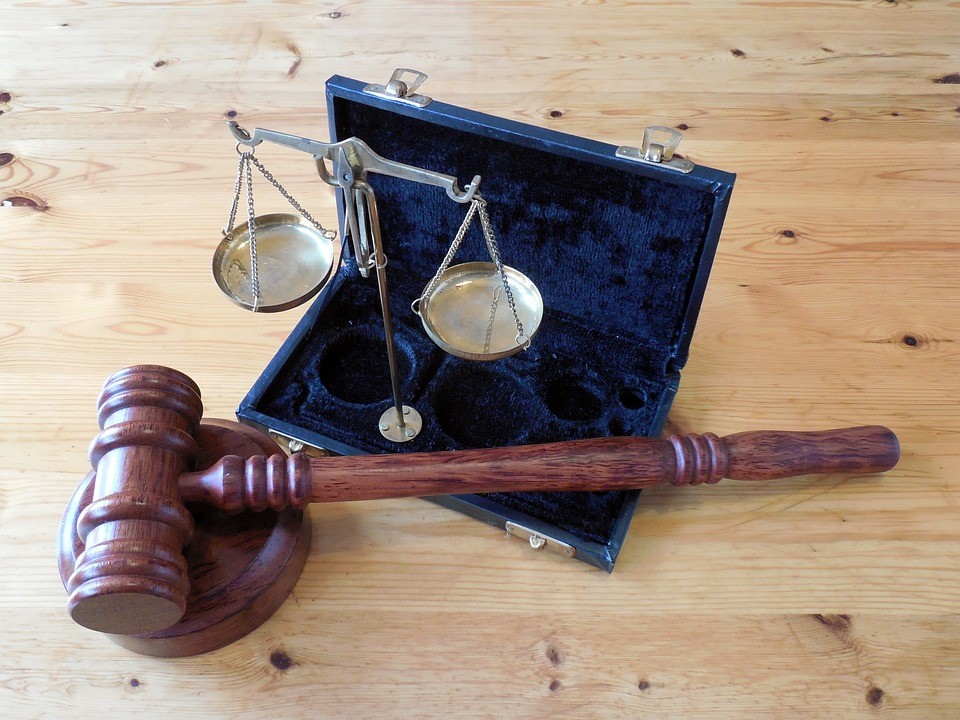
One of the first steps any criminal defense lawyer would take in defense of any client, is an examination of the indictment for legal sufficiency. Under Section 200.50 of the New York State Criminal Procedure Law, “an indictment must contain…(a) statement in each count that the grand jury…accuses the defendant…of a designated offense,” as well as “(a) plain and concise factual statement in each count which… asserts facts supporting every element of the offense charged and the defendant`s…commission thereof with sufficient precision to clearly apprise the defendant…of the conduct which is the subject of the accusation.”
According to the first count of the indictment, “(t)he defendant, in the County of New York and elsewhere…with intent to defraud and intent to commit another crime and aid and conceal the commission thereof, made and caused a false entry in the business records of an enterprise, to wit, an invoice from Michael Cohen dated February 14, 2017, marked as a record of the Donald J. Trump Revocable Trust, and kept and maintained by the Trump Organization.” Each of the rest of the charges all involve different documents on different dates, but each contains the exact same phrase; “with intent to defraud and intent to commit another crime and aid and conceal the commission thereof.”
This language would appear to track the language of NY Penal Law Section 175.10, which states that “a person is guilty of falsifying business records in the first degree…when his intent to defraud includes an intent to commit another crime or to aid or conceal the commission thereof.”
Thus, under Count One of the Indictment, Donald Trump is accused of causing a false entry to be made in one of the business records of his Revocable Trust for the purpose of committing another crime.
“Another crime.” What other crime? The indictment does not say – and herein lies a very elemental problem for the Manhattan District Attorney.
As we noted above, New York law requires an indictment to “assert facts supporting every element of the offense charged,” the “defendant’s commission thereof,” and to assert those facts “with sufficient precision to clearly apprise the defendant of the conduct which is the subject of the accusation.”
These are basic requirements under New York State’s criminal law. In the 2018 case of People v. Ramcharran, the Queens County Criminal Court wrote that “(t)o be facially sufficient, an accusatory instrument must specify the offense(s) charged and contain factual allegations of an evidentiary nature that tend to support them…(s)uch factual allegations…must consist of non-hearsay allegations that provide reasonable cause to believe that the defendant committed the offense(s) charged, which if true, establish each and every element of those charges… mere conclusory allegations are insufficient…(i)t must…at a minimum, provide an accused with adequately detailed factual allegations of an evidentiary nature sufficient for a defendant to prepare a defense, and prevent him from being tried twice for the same offense.” (Citations omitted.)
Simply put, how is former President Trump to prepare a defense, if he is not informed of the “other crime” he intended to commit or conceal when he allegedly falsified his business records?
Certainly, the law does allow the District Attorney to supplement the Indictment with an additional statement of facts, such as a Bill of Particulars. But unless the prosecution amends the indictment itself, the document which accuses Trump of a crime is clearly and substantially insufficient on its face.
The Ramcharran case involved the District Attorney’s failure to include the right location where the crime was allegedly committed in the indictment (which is another potential defect in the Trump indictment – note that the location of the crime is stated to be “the County of New York and elsewhere”). (Emphasis added) Here, notice of the actual crime which was allegedly violated by former President Trump is missing, a far more serious omission.
Trump’s defense counsel will undoubtedly file a motion asking the judge to inspect the minutes of the District Attorney’s presentation of the case to the Grand Jury, “for the purpose of determining whether the evidence before the grand jury was legally sufficient to support the charges” under CPL Sec. 210.30.
If the Grand Jury was not informed of the “other crime” which Trump intended to commit or conceal when he allegedly falsified his business records (or where “elsewhere” is located), then the presentation to the Grand Jury was hopelessly, fundamentally flawed, and the indictment must be dismissed.
Will this indictment be dismissed, on this, or any other basis? Frankly, don’t hold your breath waiting. The judge assigned the case, Juan Merchan, has already handled two other matters brought against the Trump Organization, both of which resulted in criminal convictions. This, in and of itself, does not make Merchan unfair or biased. However, according to the New York Post, Merchan “donated $35 to Democratic causes in 2020, including $15 to President Biden’s campaign and $10 to a group dedicated to ‘resisting … Donald Trump’s radical right-wing legacy.’”
Does this record of political donations sound like someone who would dismiss Alvin Bragg’s indictment against Donald Trump?
Judge Wilson served on the bench in NYC
Illustration: Pixabay
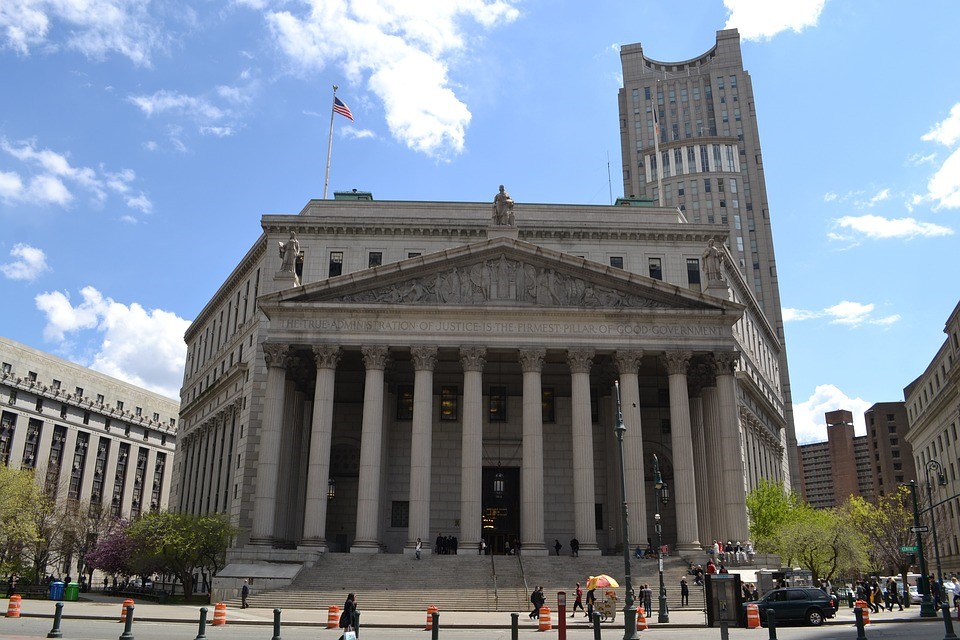
Daniel Keith was a notorious con man and swindler in Rutherford County, North Carolina. “His biggest swindle took place in 1879 when he took a sixty-eight pound rock and rubbed it with brass. He sold this ‘gold’ mine to many men in Western Carolina making him one of the most unpopular men in North Carolina. Many swore that they would get even with him; and in January of 1880, a tragedy would give them the opportunity to rid Rutherford County of Daniel Keith once and for all.”
That year, a young girl was found brutally raped and murdered. Suspicion fell on Keith when “a witness came forth and said that he had seen Daniel Keith in the area and that he appeared to be drunk and belligerent. A couple of hours later Sheriff (NE) Walker contacted Keith at his cabin. He was sober, but there were bloodstains on his shirt. The Sheriff asked him where the stains had come from, and Keith stated that he had ‘been skinning rabbits.’ His story was not believed even though the carcasses of the rabbits had been found. Keith was arrested (and) was found guilty…in spite of evidence produced in the trial that there was an escaped convict from neighboring McDowell County who had been sighted in the area by several persons. This fugitive had been awaiting execution for the same (type of) crime (of which) Keith was accused.”
After having the appeal of his conviction denied, Keith “professed his innocence up to the moment” he was hanged, saying, among other things, “a man should be hung for what he’s done, not for what he ain’t done.”
There can be no doubt that former President Donald Trump is a very polarizing figure. There seems to be no middle ground with Trump – you either hate him, or you love him. Unfortunately, the people who hate the former President the most are currently in power.
One of those who clearly “has it out” for Trump is Manhattan District Attorney Alvin Bragg. While campaigning for the office he currently holds, Bragg “repeatedly touted his experience suing Trump…while serving as the state’s chief deputy attorney general from 2017 to 2018, leading to the shutdown of the Donald J. Trump Foundation and payment of $2 million in court-ordered damages…following his election, Bragg, who took office Jan. 1, 2022, again invoked his experience suing Trump in response to the stunning resignations of prosecutors Mark Pomerantz and Carey Dunne, who had led the Trump investigation until clashing with their new boss.”
According to the Atlantic News Telegraphic, “(n)o, Bragg did not specifically pledge, ‘If elected, I will indict Donald J. Trump.’ But he promised to pursue Trump and hold him ‘accountable,’ which is progressive code for going after Trump in any way possible.”
No one can say that Alvin Bragg isn’t a man of his word. As is well known, a Manhattan Grand Jury recently voted to Indict former President Trump for 34 counts of Falsifying Business Records in the First Degree, a violation of NY Penal Law Section 175.10. On April 4, 2023, Trump was arraigned in New York County Supreme Court on this indictment, and entered a plea of Not Guilty.
Let us put aside the unprecedented nature of these events, that is, the fact that a local District Attorney has brought state criminal charges against a former President of the United States for the first time in the history of our nation. Let us also ignore (for now) the emotional arguments from both left and right as to whether Trump is a martyr, being prosecuted for trying to “drain the swamp” of Washington DC politics, or a villain like Daniel Keith, someone who deserves to go to jail for something, anything, just so long as he is stopped.
Instead, let us consider this case as if Trump were any other defendant accused of a crime. Objectively speaking, are there facts sufficient to substantiate the charges brought against Donald Trump?
Judge John Wilson’s (ret.) Report concludes tomorrow
Illustration: Pixabay
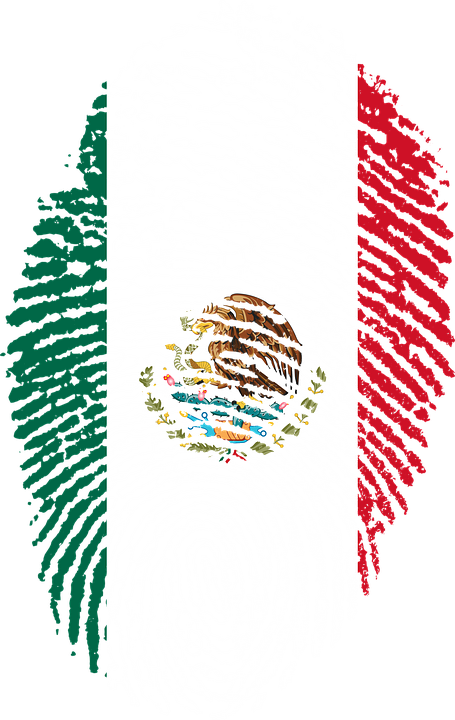
Top US and Mexican officials are discussing how to address the issues surrounding illegal “economic migrants” and the Mexican drug cartels. The US has considered whether to send into Mexico, American military special operators, law enforcement, or diplomats to handle the mounting challenges the Biden Administration faces in countering the cross-border drug trade and illegal immigration. Joint Chiefs Chairman General Mark Milley is against sending in US troops to improve border security and stem the flow of drugs like fentanyl into the US. He argues that the military should not lead American counter-drug efforts or operate against the cartels without the Mexican government’s permission. General Milley and Secretary of Defense Lloyd Austin both testified in Senate and House hearings on the president’s defense budget request and faced bipartisan questioning about the possible use of the military or other possible measures.
The problem with leaving it to Mexico to resolve, analysts point out, is that the country is effectively a failed state and the government, including its military and local law enforcement, are incapable of handling illegal immigration or eliminating the drug cartels. Milley favors training local Mexican police officers and asking the Mexican military to stem the drug trade. Many are paid by the cartels, threatened if they won’t cooperate, and murdered when they do stand up. Restricting the purchase of guns in Mexico has not resolved the problem. There is a single legal gun store in Mexico and the country has issued only 50 gun permits. “Between 70 to 90 percent of guns recovered at crime scenes in Mexico can be traced back to the US. Drug cartels, in particular, buy those weapons in the U.S., mostly in Texas or Arizona, and smuggle them across the border,” says Lisa Mineo, writing in the Harvard Gazette.
In an exclusive interview with Defense One, Kevin Baron notes that Milley admits “…it’s a serious problem. It’s a huge problem.” He adds that several Republicans, including Rep. Morgan Luttrell (TX-R), this week asked about or called for the Biden administration to designate Mexico’s cartels as terrorist organizations, instead of transnational criminal organizations. “That’s the same thing, in my opinion,” Luttrell said in a House Armed Services Committee hearing on Wednesday. Cartels are responsible for upwards of 100,000 Mexicans who have been “disappeared,” a term referring to the kidnapping and possible killing of people. On average the cartels in Mexico kill a confirmed 20,000 every year. That violence has crossed into the US and the transnational criminal organizations are spreading across our country.
Donald Trump says the problem is out of control and has asked for “battle plans” to be drawn up to “conduct specific military operations to destroy the cartels, according to Rolling Stone Magazine this week. The Trump policy paper reportedly says “It is vital that Mexico not be led to believe that they have veto power to prevent the US from taking the actions necessary to secure its borders and people.” Milley responded to the report saying “I wouldn’t recommend anything be done without Mexico’s support.”
Milley suggests that the drug trafficking trade has not risen to the level of a national security threat to our country and that it is fundamentally a law enforcement issue, calling it “a crime.” He added that most people coming across the border were “economic migrants” and that the US Government does not know their intent. “ The fentanyl they push is killing thousands on both sides of the border. In Mexico, they torture and kill journalists to silence them, battle law enforcement and the military, and terrorize civilians,” writes Baron. Last week the Justice Department announced charges against more than 24 members of the powerful Sinaloa cartel, including the three sons of drug lord Joaquin “El Chapo” Guzman, in a fentanyl-trafficking investigation; only one is in custody in Mexico. According to US Justice Department officials, those charges include a broad swath of the Sinloa network with members from China and Guatemala accused of supplying the precursor chemicals needed to make the drugs. Two Chinese firms were also sanctioned by the US Treasury’s Office of Foreign Assets Control last week. In 2021,a record of almost 107,000 Americans died of drug overdoses despite fentanyl seizures by US Customs and Border Protection increasing by more than 400% since 2019.
The Sinaloa cartel, which provides most of the fentanyl available in the US, is an extremely violent group that is known to torture its perceived enemies, including Mexican officials, and have fed many of their enemies alive to the cartel’s tigers, according to US Attorney General Garland. Other senior Biden Administration officials briefing reporters after the announcement of the indictments said Washington is turning to allies in Europe and the Middle East to ask China to do more to solve the cross-border drug problem. It appears that once again Washington is leading from behind.
Daria Novak served in the U.S. State Dept.
Illustration: Pixabay

Listen to our latest radio program at https://drive.google.com/file/d/13H-TnKi0f3BIakpH_AzMA_XjzCCTArWG/view?ts=6440396c